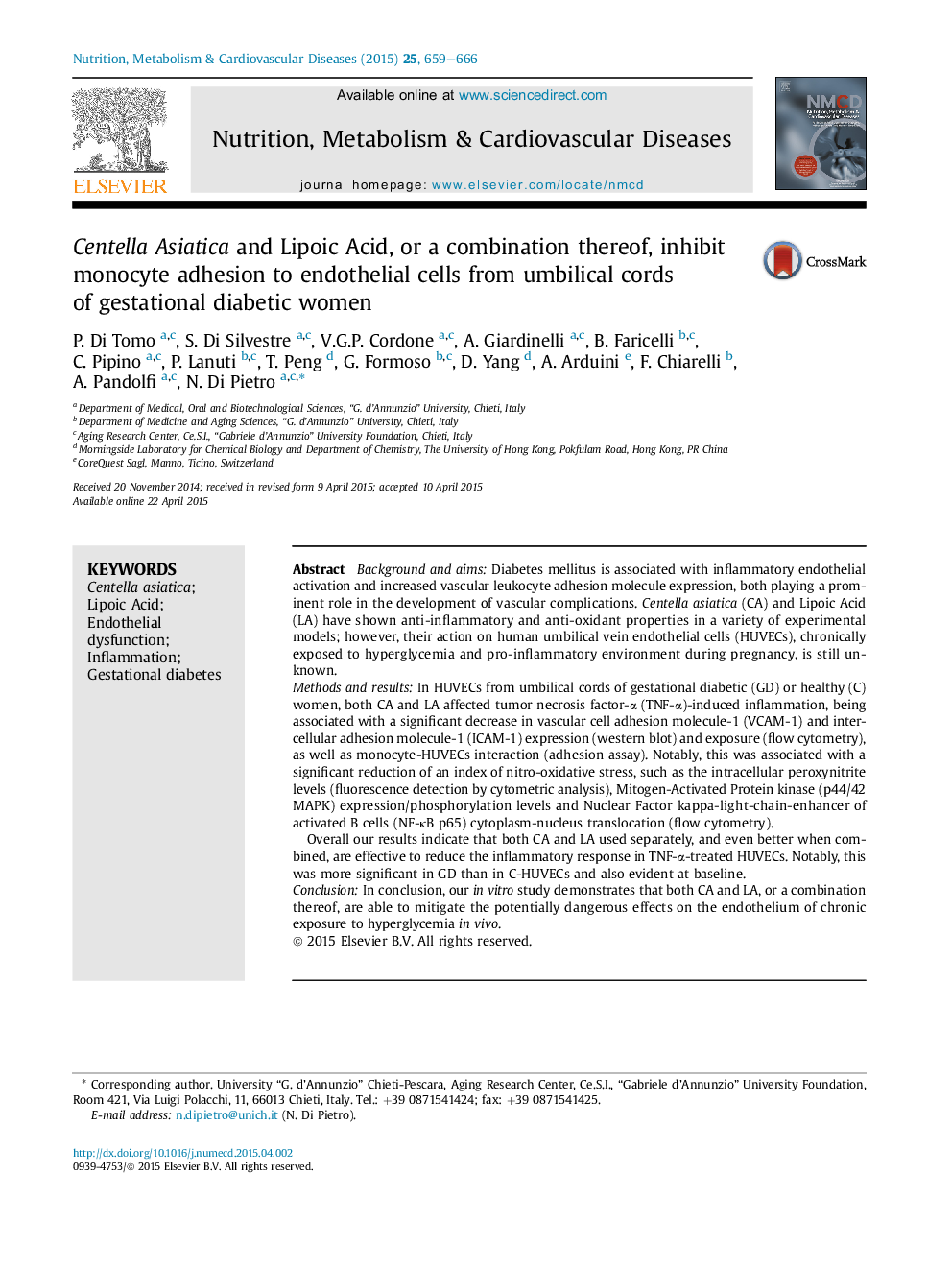| کد مقاله | کد نشریه | سال انتشار | مقاله انگلیسی | نسخه تمام متن |
|---|---|---|---|---|
| 5996399 | 1180663 | 2015 | 8 صفحه PDF | دانلود رایگان |

- GD-HUVECs exhibit increased monocyte adhesion following TNF-α stimulation.
- CA and LA decrease the adhesion molecule expression and exposure in GD-HUVECs.
- CA and LA, or a combination thereof, decrease monocyte adhesion in GD-HUVECs.
- CA and LA combined at low doses are more effective than used separately.
- CA and LA may have beneficial effects on endothelium exposed to hyperglycaemia.
Background and aimsDiabetes mellitus is associated with inflammatory endothelial activation and increased vascular leukocyte adhesion molecule expression, both playing a prominent role in the development of vascular complications. Centella asiatica (CA) and Lipoic Acid (LA) have shown anti-inflammatory and anti-oxidant properties in a variety of experimental models; however, their action on human umbilical vein endothelial cells (HUVECs), chronically exposed to hyperglycemia and pro-inflammatory environment during pregnancy, is still unknown.Methods and resultsIn HUVECs from umbilical cords of gestational diabetic (GD) or healthy (C) women, both CA and LA affected tumor necrosis factor-α (TNF-α)-induced inflammation, being associated with a significant decrease in vascular cell adhesion molecule-1 (VCAM-1) and intercellular adhesion molecule-1 (ICAM-1) expression (western blot) and exposure (flow cytometry), as well as monocyte-HUVECs interaction (adhesion assay). Notably, this was associated with a significant reduction of an index of nitro-oxidative stress, such as the intracellular peroxynitrite levels (fluorescence detection by cytometric analysis), Mitogen-Activated Protein kinase (p44/42 MAPK) expression/phosphorylation levels and Nuclear Factor kappa-light-chain-enhancer of activated B cells (NF-κB p65) cytoplasm-nucleus translocation (flow cytometry).Overall our results indicate that both CA and LA used separately, and even better when combined, are effective to reduce the inflammatory response in TNF-α-treated HUVECs. Notably, this was more significant in GD than in C-HUVECs and also evident at baseline.ConclusionIn conclusion, our in vitro study demonstrates that both CA and LA, or a combination thereof, are able to mitigate the potentially dangerous effects on the endothelium of chronic exposure to hyperglycemia in vivo.
Journal: Nutrition, Metabolism and Cardiovascular Diseases - Volume 25, Issue 7, July 2015, Pages 659-666